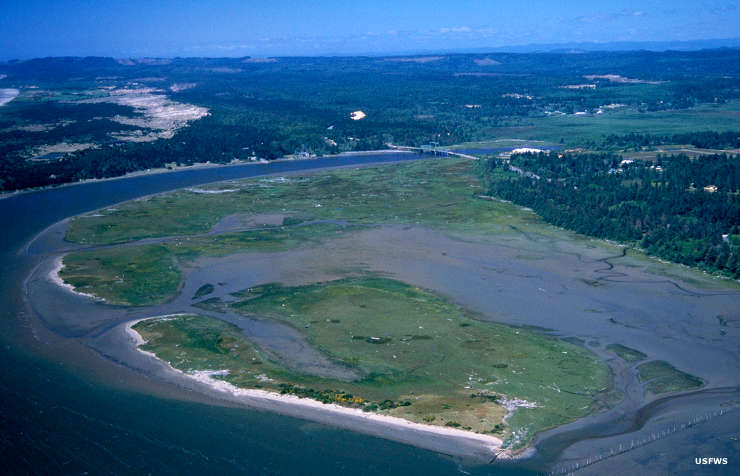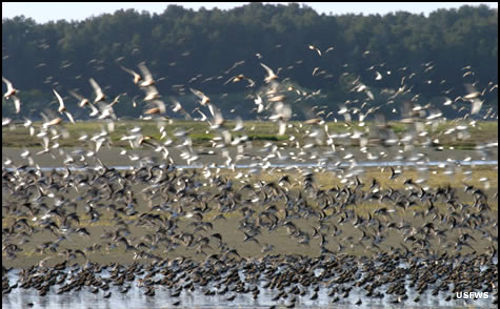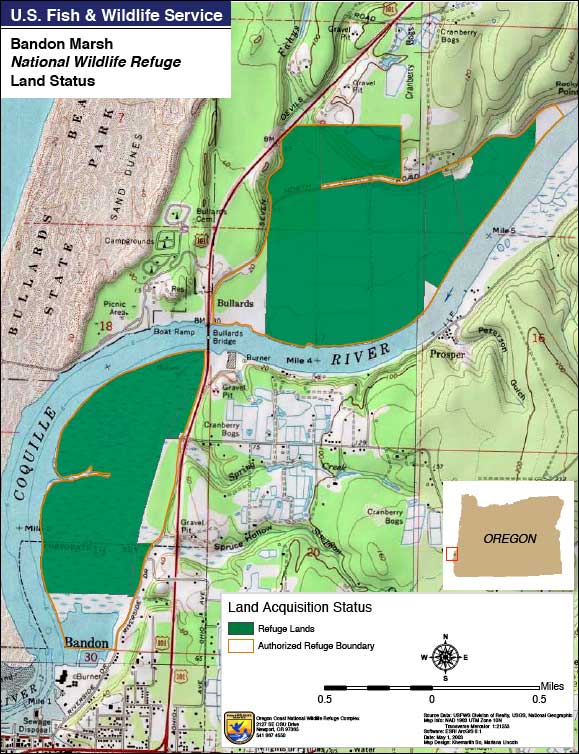Bandon Marsh National Wildlife Refuge

Bandon Marsh National Wildlife Refuge
Bandon Marsh National Wildlife Refuge is an 889-acre property located along the Oregon Coast near the mouth of the Coquille River. The property contains two units: Bandon Marsh and Ni-les'tun. Bandon Marsh is the last undisturbed tract of salt marsh in the Coquille River estuary. This is a mix of Sitka spruce and alder river bank communities fronting on mudflats and salt marsh. This is important nesting and resting area for neotropical migrants, wading birds, raptors, shorebirds and migratory waterfowl. What also makes the area important is the presence of so many juvenile and adult Chinook and Coho salmon and steelhead and cutthroat trout in the lower Coquille River estuary.
The Ni-les'tun Unit is located about 1/4 mile upstream on the other side of the Coquille River from the Bandon Marsh Unit. Public use of Ni-les'tun is limited to environmental education only. This unit was named by the Coquille Indian Tribe in honor of all the fish weirs in the area. The unit is managed as a natural area but effort is under way to restore the dike-protected lowland pasture to natural tidal marsh.
Bandon Marsh National Wildlife Refuge is most noted among bird watchers as a place to catch views of rare shorebirds like the Mongolian plover, ruff and Hudsonian godwit. You'll also find California brown pelicans, red phalaropes, whimbrels, black-bellied plovers, Pacific golden plovers, semipalmated plovers and Western and least sandpipers. The mudflats are also rich in crab, clam, worm and shrimp.
There are several accesses to the property for clammers, hunters and fishermen and several overlooks for the bird watchers in the crowd.

Shorebirds in flight at Bandon Marsh NWR

Photo of shorebirds courtesy of David Ledig, US Fish & Wildlife Service
Map courtesy of the US Fish & Wildlife Service